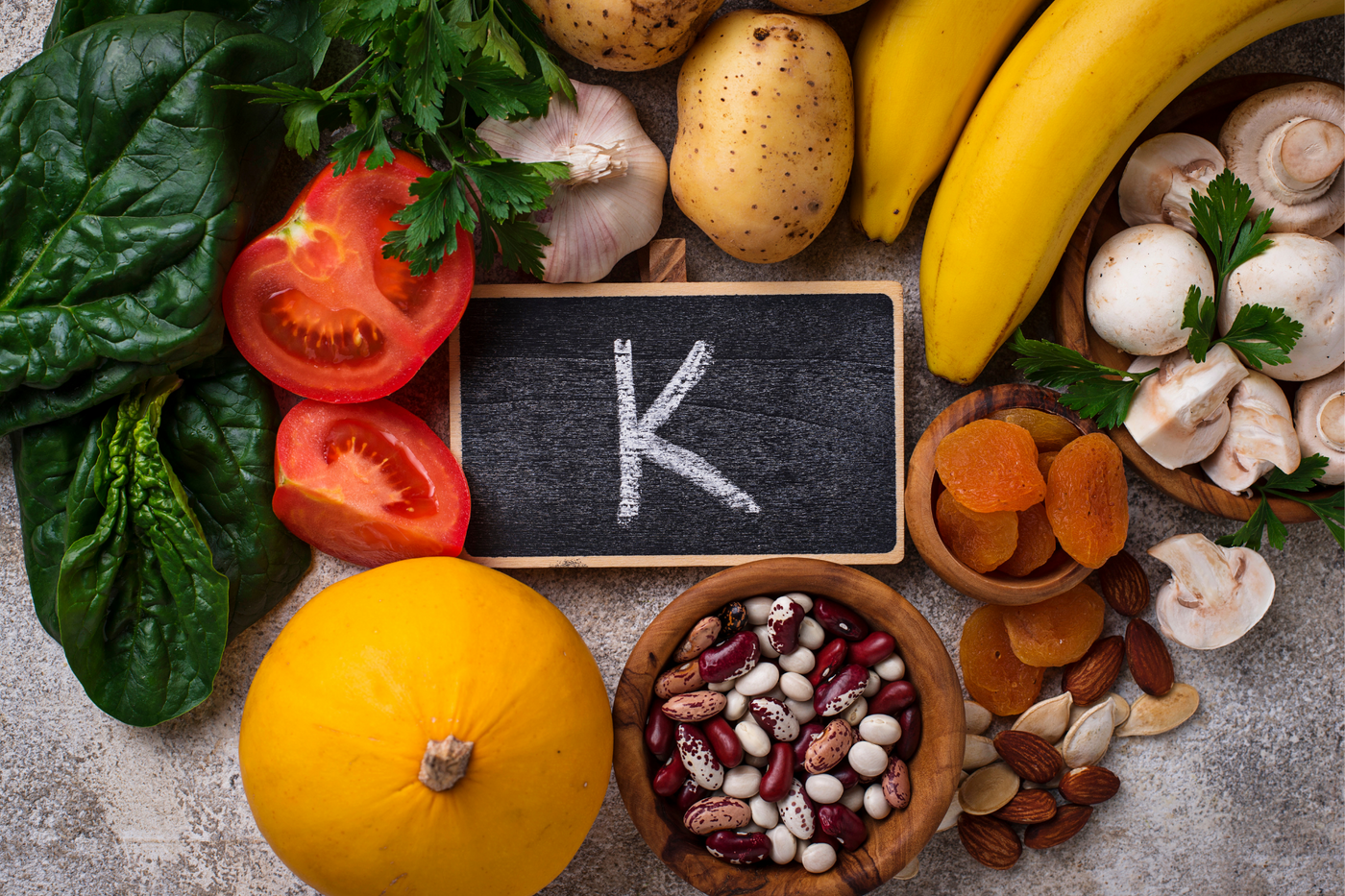Fibro Fix Blog

Digestive Issues? Here’s What You Can Do to Tame Them 0
Good digestion. When it’s all working smoothly, we tend to take it for granted, but when things get out of balance it can quickly become all we think about.- Dr. Brady
- Tags: diet digestion digestive health whole foods

Lifestyle Factors to Reduce Pain and Inflammation 0
Chronic pain is a common and complex problem affecting 20–30% of the population of Western countries. The pharmaceutical industry has garnered billions of dollars in painkiller and anti-inflammatory sales, yet this hasn’t come without potential health risks to consumers from a well-documented crisis level of opioid addiction to frequent gastrointestinal complications and an increased risk of developing cardiovascular disease. We witness these side effects with an understanding that pharmaceuticals may provide partial, and not always full relief from chronic pain.
It’s no wonder we’re hearing from a lot of patients who are looking for a more natural approach to managing their chronic pain.
What is Chronic Pain?
We all feel physical pain from time to time. Injury, inactivity, sickness and disease can cause many different types of aches and pain. When this occurs, our bodies work hard to heal so that we can return to our normal lives. But what happens if the pain doesn’t go away, or doesn’t fully go away, or even worse… begins to hurt more? This is when pain becomes chronic. Chronic pain is defined as pain that lasts more than three months.
What Does Chronic Pain Feel Like?
Chronic pain comes in many forms. It can be dull, sharp, heavy, tingling, throbbing, burning, squeezing, shooting, achy, or sore. I can be a mix of any of these forms, or be only one. It can come and go or be consistent over the course of a day or many days, but it is always recurring. It can also be dull, or acute, or a mix of both and anywhere in between. It can happen during the day or night, or both.
The Emotional and Social Cost of Ongoing Pain
Chronic pain takes its toll on your lifestyle, your relationships and your mental health. It can create brain fog during the day and sleep disturbances and/or sleepless nights. Chronic pain sufferers also regularly report feelings of fatigue, sadness, nervousness, overwhelm, irritability, frustration and anger. There are high incidences of anxiety and depression among chronic pain sufferers.
Additionally, long-term depression increases the probability of a person reporting high levels of chronic pain. All of this combined can create a terrible cycle of inactivity and suffering.
Natural Options for Chronic Pain Are Available
In addition to the conventional approach, there are a number of natural modalities that can work alongside medication and potentially lessen the need for pharmaceutical support. Here are some of our favourites.
Movement
Regular, gentle physical movement, particularly activities involving the mind-body connection or meditative movement therapies (MMT) help minimize chronic pain. These activities strengthen the body and help develop mindfulness, leading to stress reduction, at the same time. Pilates, Tai Chi, Qi Gong, and Yoga are fantastic examples of mind-body therapies.
Flexibility training, core training, balance training, and light strength training are other forms of movement that help manage chronic pain by lubricating the joints, improving your overall stability and increasing your range of motion.
Acupuncture
Acupuncture has been used in traditional Eastern medicine for thousands of years. It involves inserting small needles into the skin at specific acupoints, typically leaving them in place for up to 30 minutes while you rest. The body reacts to the process by releasing endorphins into your bloodstream. These endorphins act as natural painkillers and also affect the part of the brain that governs serotonin, one of the brain chemicals that positively affect mood.
An Anti-Inflammatory Diet
Keeping inflammation under control is critical when it comes to managing chronic pain. Adopting an anti-inflammatory diet can help reduce your diet’s impact on inflammation and is something you can start today. The main tenets of a diet designed to lessen inflammation include:
- Eliminate sugar: Too much added sugar is one of the primary contributors to chronic, low-grade inflammation.
- Eat Your Greens: Eat a diet rich in an assortment of vegetables. Choose a variety of colours and vegetable types to ensure you are getting a wide variety of vitamins, minerals, enzymes and antioxidants. Cruciferous vegetables, such as cabbage and broccoli are particularly rich in phytonutrients that help lower inflammation.
- Limit Nightshades: Some people benefit from limiting or completely removing vegetables in the nightshade family. These include tomatoes, bell peppers, white potatoes, and eggplant.
- Check for Food Sensitivities: Knowing whether your body is reacting to certain foods known to commonly trigger sensitivities, such as wheat and dairy, can help you choose your ingredients appropriately and lessen any inflammatory reactions.
- Eat Whole Foods: A whole food diet means avoiding processed or refined foods, instead opting for foods in their original form, chock full of vitamins, minerals and fiber. This includes whole grains like oats, quinoa, brown rice, buckwheat, and spelt, as well as fresh vegetables, whole, unprocessed proteins and beans.
- Choose Cooking Oils Wisely: Refined oils such as soybean, cottonseed and canola oils are highly unsaturated and oxidize easily when they come into contact with heat in the refinement process, leading to harmful trans fats. Less refined oils with a higher smoke point make healthier options that your body will know what to do with. Extra virgin olive oil and coconut oil have a smoke point of around 400F, making them good choices for healthy cooking.
- Eat Less Red Meat: When it comes to reducing pain and inflammation, red meat is under scrutiny not so much for the saturated fat it contains, but rather because red meat is high in arachidonic acid. This essential fatty acid is pro-inflammatory and plays a role in promoting pain messaging in the body. If you already have symptoms of inflammation and chronic pain, reducing how much red meat you eat can help tone down those pain-promoting chemical messages.
- Eat More Fish and Nuts: Oily fish such as salmon, sardines and mackerel contain anti-inflammatory essential fatty acids, as do seeds such as hemp, flax and pumpkin seeds, and nuts such as walnuts, almonds and hazelnuts. These fats help your body to build healthy cells and hormones, and reduce inflammation throughout the body.
- Drink plenty of filtered water: Adequate water intake helps flush inflammatory toxins and irritants out of your cells. Water helps your body to eliminate waste effectively, lubricates your joints and muscles, and is the vehicle many nutrients need to be properly absorbed into your body. Water is an absolute must if you are working to reduce inflammation and pain.
- Supplements & Herbs to Consider: Several supplements and herbs have been researched for their role in helping reduce pain and inflammation in the body. Our favourites include the following:
|
Supplements |
Herbs |
|
Oils rich in Omega-3 Fatty Acids, including fish oil and flax oil |
Turmeric/Curcumin |
|
Oils rich in linolenic acid, including borage seed oil, evening primrose oil, and blackcurrant seed oil |
Ginger |
|
Vitamin D |
Spirulina |
|
Chondroitin sulphate |
Cat’s Claw |
|
Glucosamine |
Devil’s Claw |
|
S-adenosylmethionine (SAMe) |
White willow bark |
|
Pycnogenol |
Green tea |
|
Resveratrol |
Boswellia |
|
Alpha-Lipoic Acid |
Triphala |
Everyone’s journey with chronic pain is unique. The modalities that may work wonders for one person, may not work as well for another for a variety of reasons. The best results can be achieved with a tailored, holistic treatment plan that is adapted to the individual and managed through the different stages of healing and/or pain management. As a functional/naturopathic/integrative healthcare practitioner, I/we have the lab tests and resources to support you.
Resources
Achilefu, A., Joshi, K., Meier, M., & McCarthy, L. H. (2017). Yoga and other meditative movement therapies to reduce chronic pain. The Journal of the Oklahoma State Medical Association, 110(1), 14–16.
Berman B. M. (2003). Integrative approaches to pain management: how to get the best of both worlds. BMJ (Clinical research ed.), 326(7402), 1320–1321. https://doi.org/10.1136/bmj.326.7402.1320-a
Crofford L. J. (2015). Chronic Pain: Where the Body Meets the Brain. Transactions of the American Clinical and Climatological Association, 126, 167–183.
Dansie, E. J., & Turk, D. C. (2013). Assessment of patients with chronic pain. British journal of anaesthesia, 111(1), 19–25. https://doi.org/10.1093/bja/aet124
de Heer, E. W., Gerrits, M. M., Beekman, A. T., Dekker, J., van Marwijk, H. W., de Waal, M. W., Spinhoven, P., Penninx, B. W., & van der Feltz-Cornelis, C. M. (2014). The association of depression and anxiety with pain: a study from NESDA. PloS one, 9(10), e106907. https://doi.org/10.1371/journal.pone.0106907
InformedHealth.org [Internet]. Cologne, Germany: Institute for Quality and Efficiency in Health Care (IQWiG); 2006-. Using medication: Painkillers: How common are severe side effects of NSAIDs? 2016 Apr 6 [Updated 2017 Aug 10].
Maroon, J. C., Bost, J. W., & Maroon, A. (2010). Natural anti-inflammatory agents for pain relief. Surgical neurology international, 1, 80. https://doi.org/10.4103/2152-7806.73804
Şahin, N., Karahan, A. Y., & Albayrak, İ. (2017). Effectiveness of physical therapy and exercise on pain and functional status in patients with chronic low back pain: a randomized-controlled trial. Turkish journal of physical medicine and rehabilitation, 64(1), 52–58.
Vickers AJ, Cronin AM, Maschino AC, et al. Acupuncture for Chronic Pain: Individual Patient Data Meta-analysis. Arch Intern Med. 2012;172(19):1444–1453. doi:10.1001/archinternmed.2012.3654
- Dr. Brady
- Tags: Chronic Pain Chronic Pain Management fibromyalgia

Step Into the Fall Season with Collagen 0
Collagen helps to strengthen our bone, tendons, and cartilage, and can improve the health and appearance of our hair, skin, and nails.- Dr. Brady
- Tags: collagen joint health skin health

What is Vitamin K and Why is it Important? 0
By Dr. David M. Brady and Danielle Moyer, MS, CNS
Vitamin A = Eyes.
Calcium = Bones.
What about vitamin K?
Vitamin K doesn’t get as much press as other vitamins, but that does not mean it is less important.
The “K” in vitamin K originates from the Danish word “koagulation”, which translates to “coagulation”. One of the main roles of vitamin K is assisting in blood coagulation. Meaning, if you are bleeding from a cut, vitamin K is a main player in helping the blood clot (or stop) naturally! Through time, we have learned that vitamin K’s importance goes well beyond just blood clotting.
Roles & functions of vitamin K
- Help with blood clotting
- Lowers inflammation in the body, helping with any inflammatory/autoimmune disease
- Gene expression (Properly expressing you genetic code)
- Supports optimal bone health, increasing collagen and calcium content of bones
- Supports teeth/oral health
- Supports cardiovascular health
- Anticancer effects
- Reduces risk of kidney stones
- Prevention or reversal of osteoporosis, which may reduce bone fracture risk
- For men, increased testosterone
Research has found that vitamin K, vitamin D, and vitamin A all work in concert together. For vitamin K to fully display all of its potential benefits, vitamin D and vitamin A must be optimized as well [1].
Effects of low vitamin K levels and/or deficiency:
- Easy bruising and bleeding (nosebleeds, bleeding gums, blood in urine/stool, heavy menstrual bleeding) [2]
- Improper bone mineralization
- Reduced health of joint cartilage, tendons, ligaments
- Suboptimal skin health, elasticity, and overall appearance
- Impaired insulin secretion and increased insulin resistance
- Increased risk of kidney stone formation
- Suboptimal energy production
- Inadequate antioxidant protection in the brain
- Increased severity of cystic fibrosis
- Reduced testosterone production [1]
Supplementation with high doses of standard vitamin E (d-alpha-tocopherol), ranging from 800-1200 IU, has been shown to impair and interfere with vitamin K’s blood clotting ability, whereas excess vitamin A supplementation can interfere with vitamin K absorption [1-2]. Both should be avoided unless specifically advised by your doctor and/or nutritionist.
Vitamin K has many forms
Vitamin K has different forms that can be grouped into three classifications: vitamin K1, vitamin K2, and vitamin K3. We will focus on vitamin K1 and K2, as they are the forms found in supplements and produce the benefits listed above.
Vitamin K1, or phylloquinone:
Vitamin K1 is the most common form of vitamin K in the diet and occurs naturally in certain vegetables, vegetable oils, seeds, and algae [1].
Foods with high vitamin K1 content:
- Kale
- Swiss chard
- Parsley
- Broccoli
- Spinach
- Watercress
- Leaf lettuce (green)
- Soybean oil
- Canola oil
- Olive oil
- Cottonseed oil [2]
The best way to absorb vitamin K1 through the vegetables above is to eat them cooked, blended, or juiced (as opposed to raw), as well as eating them with a source of dietary fat.
Elements that destroy vitamin K in food are exposure to light and hydrogenation (as in hydrogenated oils). Hydrogenated oils are created during industrial cooking, frying, or baking, and will be listed “partially hydrogenated” or “hydrogenated” on the ingredients list of processed foods.
A large portion of the population get their main sources of vitamin K1 from vegetable oils rather than vegetables. When the oils are hydrogenated from fast foods or processed foods, this can lead to low levels of vitamin K in the individual [1].
Vitamin K2, or menaquinones:
Vitamin K2 represents 90% of the total vitamin K stored in our body because a large portion of vitamin K1 gets converted into vitamin K2 for storage.
Vitamin K2 has 14 different forms. They are labeled MK-1 through MK-14. “MK” stands for menaquinone. The most discussed and researched forms are vitamin MK-4 and vitamin MK-7 [1].
Vitamin K2 is technically not a “vitamin” because our bodies can actually produce it themselves. Synthesis can occur through the bacteria in our intestines in a healthy gut environment. It is important to note that if a person uses an antibiotic, this can kill over 70% of the beneficial gut bacteria that normally produces vitamin K2 and extra supplementation may be necessary [4].
Since other animals and fermentation processes can synthesize vitamin K2, we can also find it in foods like:
- Grass fed-meat and liver, fish, and egg yolk
- Yogurt, cheese, sour cream, buttermilk
- Sauerkraut, kimchi, and natto
Certain individuals who have difficulty converting vitamin K1 into vitamin K2 because of age-related changes, certain diseases, genetics, or chronic antibiotic use may particularly benefit from supplementation of vitamin K2. The diseases of concern include osteopenia, osteoporosis, osteoarthritis, and arterial calcification [1].
One will often find both MK-4 and MK-7 in supplements, in addition to vitamin K1. Vitamin MK-7 displays some, but not all of the beneficial effects of MK-4, and has not been proven to be more effective than vitamin K1 or vitamin MK-4. There is also a unique element called geranylgeraniol (GG) which can facilitate more natural production of vitamin K in the body. Some supplements now contain K1 and K2-MK-4 along with GG to ensure that they all work together to promote optimal delivery of vitamin K2 (as MK-4) to tissues supporting normal blood clotting, bone mineralization, and arterial elasticity. [3]. This is good news, as MK-7 is 10 times more expensive than MK-4 per milligram basis [1]. Expensive does not always mean better, and when the hard science is looked at regarding vitamin K metabolism it may be that the marketing on some vitamin K2 sub-types is more hype than reality!

The best approach to optimize vitamin K
Overt vitamin K deficiencies are rare in the United States, but lower than optimal levels are more common [4].
The adequate intake (AI) of vitamin K1 is 90 mcg for women and 120 mcg for men. It has been found that 60-70% of the US does not meet this standard, which some argue is already below what may be necessary for optimal health.
The best recommendation for any age or gender is to get as much vitamin K1 from eating an abundance of leafy greens (or their juices) or healthy oils (such as olive oil) every day.
Humans are adapted to intake up to 1,000 mcg of vitamin K1 daily with no adverse effects [1]. Since it seems improbable that all individuals will achieve this goal via their diet, supplementation of vitamin K1 and/or K2 may be warranted for a large portion of the population.
Vitamin K may be particularly crucial for adolescents going through peak bone development and those of reproductive age. It is also important for older individuals, especially women in peri- and established menopause and men with lower than optimal testosterone levels. Lastly, it is also crucial for those on chronic antibiotic therapy as well as those with severe gastrointestinal malabsorptive disorders (Crohn’s disease, ulcerative colitis, celiac disease, cystic fibrosis, chronic pancreatitis) [1,4].
Anticoagulant drugs, such as warfarin or Coumarin, directly interfere with vitamin K utilization in the body, and large doses of vitamin K may undermine the medication. It is advised for a patient on these drugs to not avoid vitamin K intake, but rather, keep their vitamin K levels consistent at the dietary intake of 90 to 120 mcg/day, avoiding any large fluctuations. Vitamin K intake from food and supplements should be closely monitored with a doctor if you are undergoing anticoagulant therapy [2].
Labs to get your vitamin K levels assessed
If you are curious about your vitamin K levels, there are two scientifically validated functional markers: Uncarboxylated osteocalcin and uncarboxylated Matrix GLA protein [3]. One can also look at whole blood clotting and prothrombin time [4]. Plasma or blood levels are not valid indicators of vitamin K status [3]. Talk to your doctor to see which test may be appropriate and best for you.
The takeaway
Some argue that vitamin K will soon become the “new vitamin D”, where it becomes a household topic and everyone wants to optimize their levels. Many researchers performing reviews on vitamin K call for more research to further clarify its roles in clinical applications [1]. In the meantime, the least we can do is eat our green leafy vegetables! We have vitamin K to thank for that advice. However, a more proactive approach involves the use of a well designed and balances vitamin K supplement, such as Tri-K. Discussing vitamin K supplementation with you functional medicine physician and clinical nutritionist is also suggested.
References:
- Paul CI. Vitamin K. In: Pizzorno, JE, Murray MT, ed. Textbook of Natural Medicine. 5th ed. St. Louis, MO: Elsevier; 2021: 919-947.
- Gropper SS, Smith JL, Carr TP. Advanced Nutrition and Human Metabolism. 7th ed. Boston, MA: Cengage Learning; 2018: 408-415.
- Brady DM, Paul C. Tri-KTM: Three Pathways to Vitamin K. Designs for Health. Published April 2021.
- Hidgon, J. Vitamin K. Linus Pauling Institute: Micronutrient Information Center website. https://lpi.oregonstate.edu/mic/vitamins/vitamin-K. Published 2000. Reviewed August 2014. Accessed July 29, 2021.


